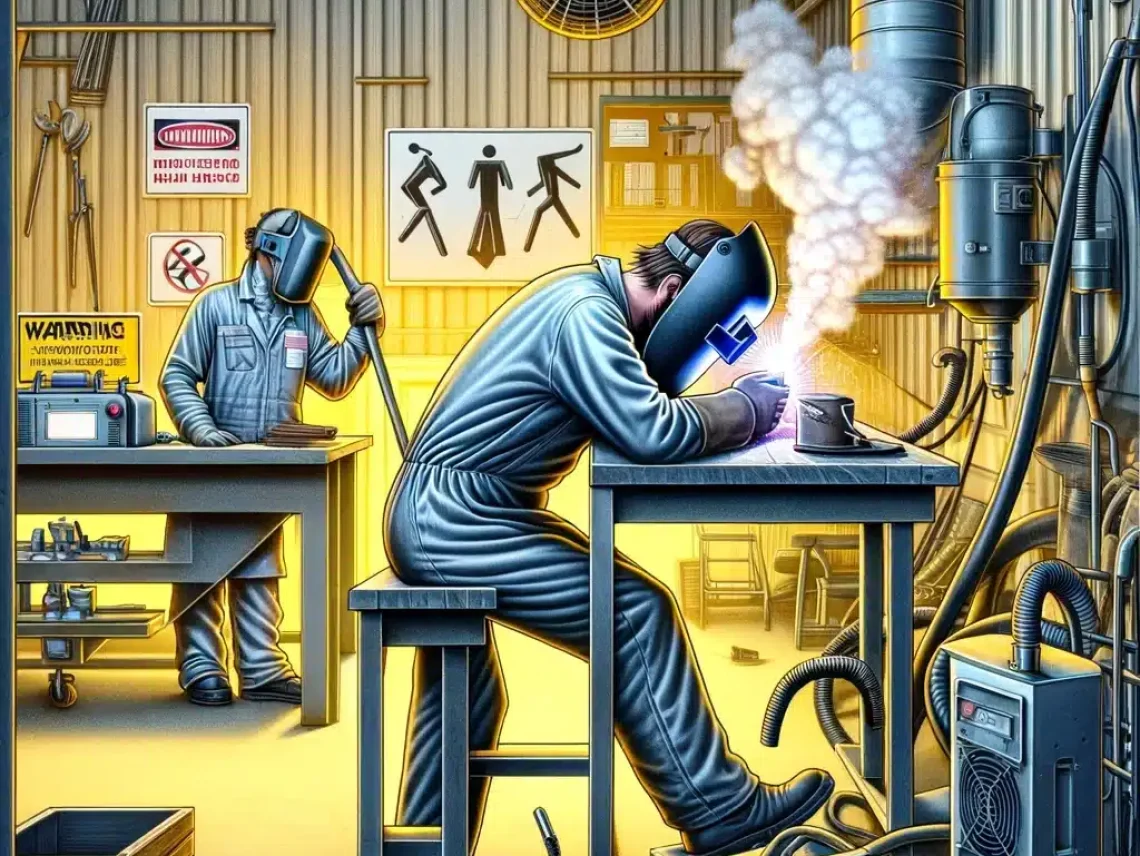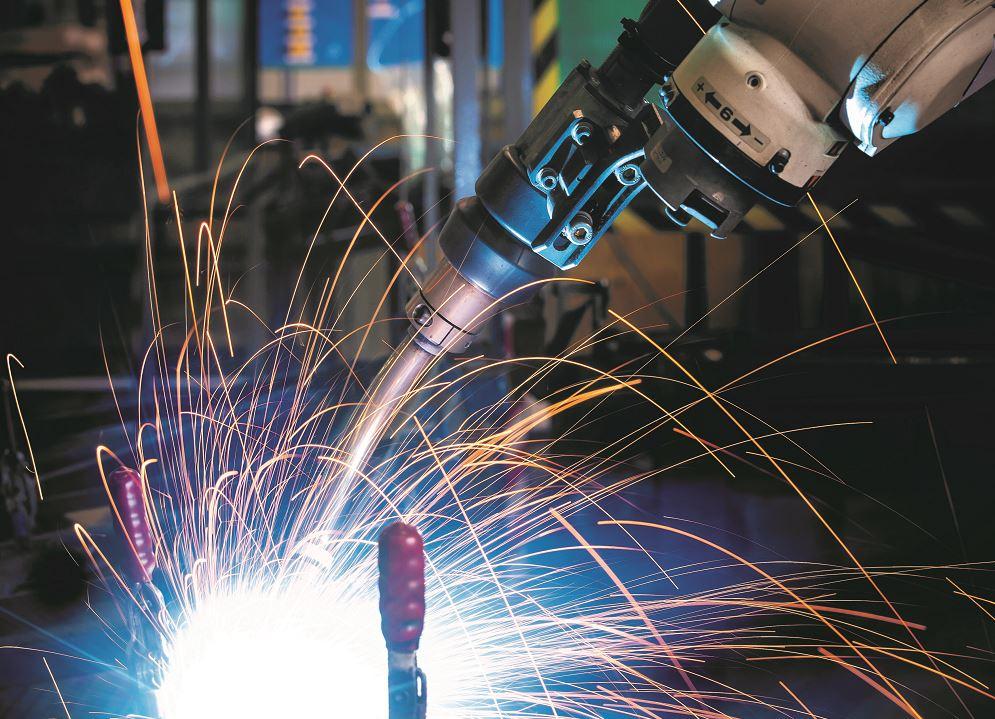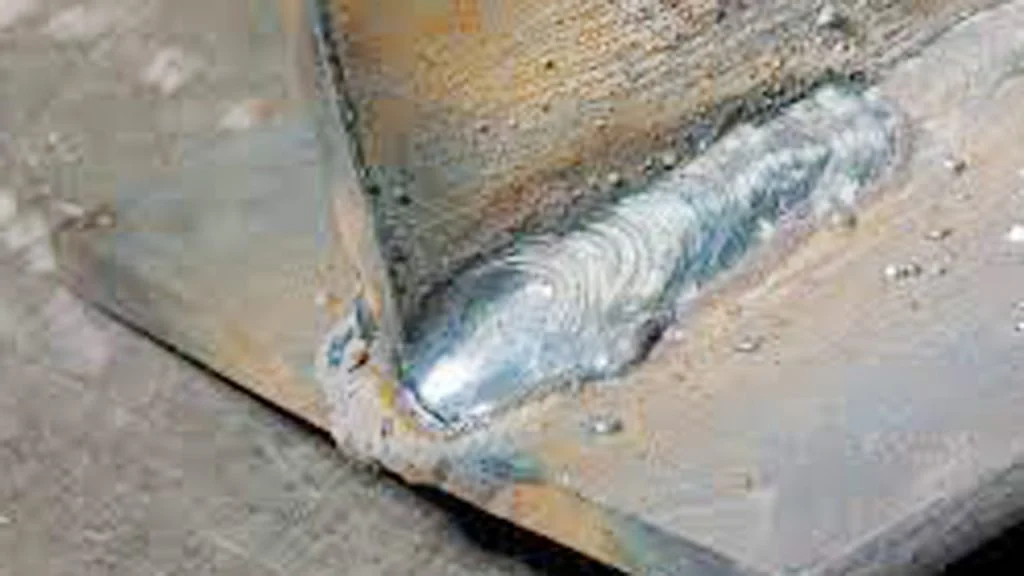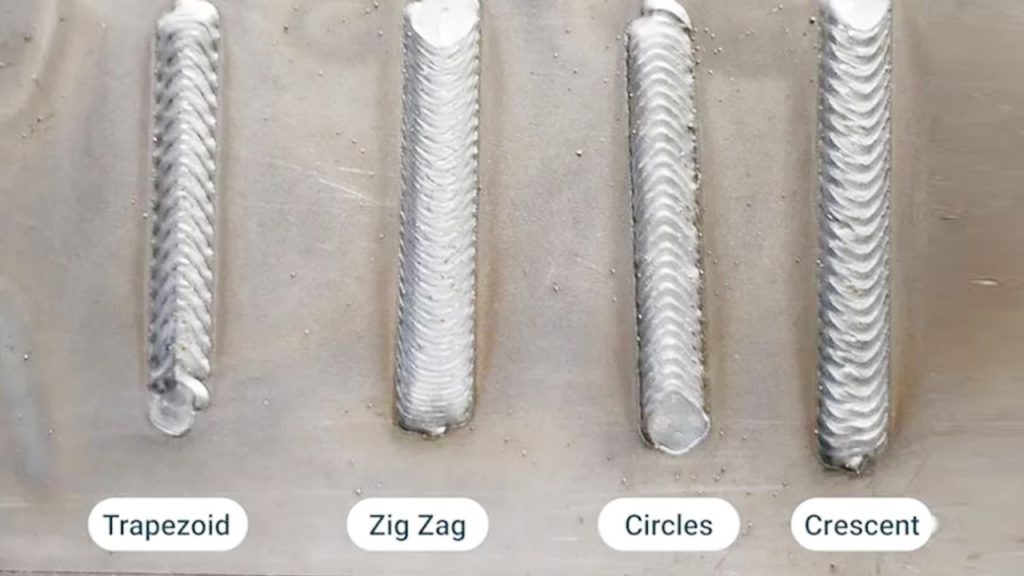Yes, welding can cause health problems. It exposes workers to hazardous fumes, gases, and intense light.
These elements may lead to serious health issues. Welding is a common industrial activity. Many people work in this field daily. But the risks involved are often underestimated. Welders face various health challenges due to their work environment. The process produces harmful fumes and gases.
Additionally, the bright light from welding can damage eyes. Understanding these risks is crucial for safety. This article explores the potential health problems caused by welding. We’ll look into the dangers and how to minimize them. Stay informed to protect your health while welding.

Credit: www.redriver.team
Welding Fumes And Gases
Welding is a highly skilled job that many people around the world rely on for their livelihoods. However, it’s also a job that can come with health risks. One of the major concerns is the exposure to welding fumes and gases. These are not just annoying; they can be quite harmful to your health. Let’s dig a bit deeper into what these fumes and gases are all about.
Types Of Fumes
When you weld, the heat melts the metal. This process creates fumes that contain tiny particles of different metals. These particles are so small that you can’t see them with the naked eye, but they can be very dangerous if you breathe them in.
Here are some common types of fumes you might encounter:
- Iron Oxide: This is common when welding steel. It can irritate your lungs and make it hard to breathe.
- Zinc Oxide: Found when welding galvanized steel. It can cause a condition called “metal fume fever,” which feels like the flu.
- Chromium and Nickel: These are present in stainless steel welding fumes. Long-term exposure can lead to serious lung diseases, including cancer.
- Aluminum Oxide: Common in aluminum welding. It can cause respiratory issues and skin irritation.
Common Gases Released
Besides fumes, welding also produces various gases. These gases can be just as harmful, and sometimes even more dangerous than the fumes. Here are some of the gases you might encounter:
- Carbon Monoxide: This gas is colorless and odorless, but it can be deadly. It prevents your body from getting the oxygen it needs.
- Ozone: Produced when welding aluminum and stainless steel. It can cause chest pain and breathing problems.
- Nitrogen Dioxide: Common in all types of welding. It can irritate your eyes, nose, and throat, and cause lung damage.
- Hydrogen Fluoride: Found in certain types of welding fluxes. It can cause severe respiratory issues and burns.
It’s important to understand these risks and take steps to protect yourself. Use proper ventilation, wear protective gear, and always follow safety guidelines. After all, your health is the most valuable tool in your toolbox!
Respiratory Issues
Welding is a skillful craft, but it comes with its share of health hazards. One of the most concerning is the potential for respiratory issues. When welders work, they are exposed to various fumes and gases that can be harmful when inhaled. Let’s dive deeper into some of these respiratory problems.
Inhalation Risks
Welders often deal with fumes and gases that rise from the welding process. These fumes can contain a mix of metals and chemicals. Breathing in these fumes over time can lead to serious health problems. Some common substances found in welding fumes include:
- Metal Oxides
- Fluorides
- Silica
Inhaling these substances can irritate the respiratory tract and cause immediate symptoms like coughing, shortness of breath, and a sore throat. It’s like standing too close to a campfire and breathing in the smoke. Not fun, right?
Chronic Respiratory Diseases
The risks don’t stop at short-term irritation. Long-term exposure to welding fumes can lead to chronic respiratory diseases. Some of these are:
- Chronic Bronchitis: A constant inflammation of the bronchial tubes, making it hard to breathe.
- Asthma: Welding fumes can trigger asthma attacks or even cause someone to develop asthma.
- Pneumoconiosis: Also known as “welder’s lung,” this condition is caused by inhaling iron particles.
Imagine trying to breathe through a straw; that’s how some of these conditions can feel on a daily basis. It can be a real struggle and significantly impact a welder’s quality of life.
| Condition | Symptoms |
|---|---|
| Chronic Bronchitis | Cough, mucus production, fatigue |
| Asthma | Wheezing, shortness of breath, chest tightness |
| Pneumoconiosis | Chronic cough, difficulty breathing |
To wrap it up, while welding is a valuable trade, it’s crucial to be aware of the respiratory risks involved. Using proper ventilation and wearing appropriate safety gear can help mitigate these dangers. If you’re in the welding profession, take these precautions seriously to protect your lungs and your overall health. After all, you only get one set of lungs!
Skin And Eye Hazards
Welding is a fascinating and essential trade, but it comes with its own set of risks. Among these, skin and eye hazards are particularly concerning. When you weld, you are exposed to intense light, heat, and various harmful substances. These factors can cause significant damage to your skin and eyes. Let’s dive into the specific dangers and how you can protect yourself.
Uv Radiation Exposure
One of the biggest threats to welders is UV radiation. When you strike an arc, it emits ultraviolet (UV) rays, which can be harmful to both your eyes and skin. Remember those times you forgot to put on sunscreen at the beach? Well, it’s a bit like that, but much worse.
Here’s what happens:
- Photokeratitis: This is essentially a sunburn for your eyes. It can cause pain, redness, and even temporary blindness.
- Skin Burns: UV radiation can also burn your skin, leading to painful blisters and long-term damage.
To protect yourself, always wear proper welding helmets with UV-filtering lenses and cover all exposed skin with flame-resistant clothing. Think of it as your armor against the invisible enemy.
Burns And Irritations
Burns and irritations are also common hazards in welding. The intense heat from the welding process can cause serious injuries if you’re not careful.
Let’s break it down:
- Thermal Burns: These occur when your skin comes into direct contact with hot metal or sparks. Imagine accidentally touching a hot stove—it’s that kind of pain, but worse.
- Spark Burns: Sparks can fly in all directions, and if they land on your skin, they can cause small but painful burns.
- Chemical Irritations: Welding often involves the use of chemicals and fumes, which can irritate your skin and eyes.
To minimize these risks, ensure that you wear appropriate protective gear, such as welding gloves, safety glasses, and a full-face shield. It’s like having your own personal force field.
In conclusion, while welding is a rewarding profession, it’s crucial to be aware of the potential hazards to your skin and eyes. By taking the right precautions, you can protect yourself and continue to enjoy the art of welding safely.
Have you ever experienced any welding-related injuries? How did you handle it? Share your stories in the comments below!
Noise-induced Hearing Loss
Welding can be a noisy job. Constant exposure to loud sounds can cause hearing loss. This is known as Noise-Induced Hearing Loss (NIHL). NIHL is a common issue among welders. It happens when loud noises damage the inner ear. Protecting your ears is important. Let’s explore the sources of noise and preventive measures.
Sources Of Noise
Welding involves many noisy tools. Power tools like grinders and cutters are loud. Arc welding machines also produce high noise levels. The environment can amplify these sounds. Metal surfaces reflect noise, making it louder.
Other workers’ activities add to the noise. Construction sites often have multiple noisy operations. All these sources contribute to the risk of NIHL.
Preventive Measures
Use ear protection like earplugs or earmuffs. These reduce noise exposure. Choose equipment with lower noise levels if possible. Keep a safe distance from loud tools when you can. Regular hearing tests help monitor your hearing health.
Educate yourself on safe noise levels. Learn about the risks of NIHL. Proper training can help you take the right precautions. Employers should also provide a safe working environment. Ensure they offer ear protection and noise control measures.
Metal Fume Fever
Welding is a crucial part of many industries, but it can come with its own set of health challenges. One of the lesser-known but significant issues is Metal Fume Fever. It may sound like something out of a sci-fi movie, but it’s a real condition that can affect welders exposed to certain metal fumes. Let’s dive into what Metal Fume Fever is, the symptoms, and how you can treat and prevent it.
Symptoms
Metal Fume Fever is like having the flu but caused by inhaling fumes from welding. The symptoms can appear a few hours after exposure and may include:
- Fever and chills
- Metallic taste in the mouth
- Fatigue and weakness
- Muscle and joint pain
- Shortness of breath and chest tightness
- Headache and dizziness
- Nausea and vomiting
Imagine you’ve had a long day welding, and you start feeling like you have the flu. But instead of a virus, it’s because of the metal fumes you’ve inhaled. It can be quite unsettling, right?
Treatment And Prevention
If you suspect you have Metal Fume Fever, the first step is to stop exposure to the fumes immediately. Here are some steps to treat and prevent this condition:
- Rest: Give your body time to recover. Resting is crucial.
- Hydration: Drink plenty of fluids to help flush out toxins.
- Fresh Air: Ensure you are in a well-ventilated area.
- Medical Attention: Seek medical help if symptoms are severe or do not improve.
Prevention is always better than cure. Here are some tips to prevent Metal Fume Fever:
- Proper Ventilation: Ensure your workspace has adequate ventilation.
- Protective Gear: Use a respirator mask to prevent inhaling fumes.
- Training: Undergo proper training to handle welding materials safely.
- Maintenance: Regularly maintain equipment to minimize fume production.
By taking these precautions, you can significantly reduce the risk of Metal Fume Fever. Remember, your health is paramount. Take those extra steps to ensure a safe and healthy welding environment.

Credit: www.thefabricator.com
Long-term Health Effects
Welding is a skilled job that requires attention to detail and safety. But, have you ever wondered about the long-term health effects of welding? While the job can be rewarding, it’s important to understand the potential risks involved, especially when it comes to your health. Let’s dive into some of the long-term health issues welders might face.
Neurological Disorders
One of the major concerns for welders is the risk of developing neurological disorders. Over time, exposure to certain metals and fumes can affect the brain. Here are some of the key points:
- Metal Fumes: Welding often involves working with metals like manganese. Long-term exposure to manganese fumes can lead to symptoms similar to Parkinson’s disease. This includes tremors, slow movement, and muscle stiffness.
- Memory Loss: Continuous inhalation of welding fumes can affect cognitive functions, leading to memory problems and difficulty concentrating. You might find yourself forgetting little things or struggling to stay focused.
My uncle, a welder for over 20 years, often joked about his forgetfulness. But as the years went by, we realized it was more than just age catching up with him. It’s a real issue that needs attention.
Cancer Risks
Another critical long-term health effect of welding is the increased risk of developing cancer. Here’s what you need to know:
- Carcinogenic Fumes: The fumes produced during welding can contain carcinogens. Inhaling these over a prolonged period can increase the risk of lung cancer.
- Skin Cancer: Welders are also at risk of skin cancer due to prolonged exposure to UV rays from the welding arc. It’s like getting a sunburn, but much more intense and frequent.
Wearing proper protective gear can help, but it’s not a foolproof solution. Regular health check-ups and being aware of any changes in your body are crucial steps in mitigating these risks.
Protective Gear And Safety Measures
Welding is a skill that creates strong, lasting structures. But it can pose health risks without proper safety measures. Protective gear is essential. It shields you from harmful fumes and intense light. Safety measures reduce the risk of injury and long-term health problems.
Respiratory Protection
Welding produces fumes and gases that can harm your lungs. Wearing a respirator can help. It filters out toxic particles. Choose a mask suited for welding. Ensure it fits snugly. Clean and maintain it regularly. This will keep it effective.
Eye And Skin Protection
Welding arcs emit bright light and UV radiation. These can damage your eyes. Use a welding helmet with a proper lens. It should block UV and infrared rays. Ensure it has a clear, undamaged lens. Gloves and long sleeves are also important. They protect your skin from sparks and heat. Use flame-resistant materials for extra safety. Regularly inspect your gear for wear and tear.

Credit: safe-welding.com
Regulations And Guidelines
When it comes to welding, safety is paramount. Many people worry about the health risks associated with welding, and rightly so. However, there are strict regulations and guidelines designed to protect welders. These rules are there to ensure that those working in the welding industry remain safe and healthy. Let’s delve into what these regulations entail, and how they impact welders and employers alike.
Occupational Safety Standards
One of the key elements in ensuring the safety of welders is adhering to occupational safety standards. These standards are set by various organizations worldwide, such as OSHA (Occupational Safety and Health Administration) in the United States, and similar bodies in other countries. These regulations are designed to minimize the risk of health problems caused by welding.
To put it simply, occupational safety standards cover a range of practices, including:
- Proper Ventilation: Ensuring that the workspace is well-ventilated to avoid inhaling harmful fumes.
- Personal Protective Equipment (PPE): Wearing appropriate gear like helmets, gloves, and goggles to protect from burns, UV radiation, and sparks.
- Regular Health Checks: Periodic medical examinations to monitor for any potential health issues.
These standards are not just guidelines; they are mandatory. Failure to comply can result in serious legal consequences and, more importantly, jeopardize the health of the workers.
Employer Responsibilities
Now, let’s shift gears and talk about the employer responsibilities. Ensuring a safe working environment is not just the duty of the welders; employers have a significant role to play as well. They are responsible for implementing the safety standards and making sure all employees follow them.
Employers must:
- Provide Training: Offer proper training sessions on safety protocols and the correct use of equipment.
- Maintain Equipment: Regularly check and maintain welding equipment to ensure it is functioning properly.
- Conduct Risk Assessments: Perform regular risk assessments to identify potential hazards and take steps to mitigate them.
Imagine a scenario where a company fails to provide adequate training. The chances of accidents and health issues would skyrocket, right? This is why employers must take their responsibilities seriously.
In conclusion, while welding does come with its set of health risks, stringent regulations and guidelines are in place to protect workers. Both welders and employers need to work together to ensure these regulations are followed. After all, a safe work environment benefits everyone involved.
Frequently Asked Questions
Is Welding Worse Than Smoking?
Welding and smoking both pose health risks but in different ways. Welding fumes can cause respiratory issues and long-term lung damage. Smoking leads to numerous diseases including cancer and heart issues. Comparing them directly is complex, but both are hazardous and should be approached with caution and proper safety measures.
Can Welders Live A Long Life?
Yes, welders can live a long life. Proper safety measures and regular health check-ups are essential. Staying healthy and avoiding prolonged exposure to hazardous fumes also helps.
How Long Does It Take To Get Welders’ Lungs?
The time to develop welders’ lungs varies. It depends on exposure duration, frequency, and safety measures. Regular check-ups help monitor lung health.
Is Welding Tough On Your Body?
Yes, welding can be tough on the body. It involves exposure to intense heat, bright light, and toxic fumes. Long hours and repetitive motions can lead to strain and injuries. Proper protective gear and ergonomic practices can help reduce risks.
Conclusion
Welding can cause health problems if safety measures are ignored. Proper gear and ventilation are crucial. Always wear protective equipment. Ensure a well-ventilated workspace. Regular health check-ups are important. Be aware of symptoms. Take breaks frequently. Stay hydrated. Follow safety guidelines strictly.
Knowledge about risks helps in prevention. Stay safe and healthy while welding.

